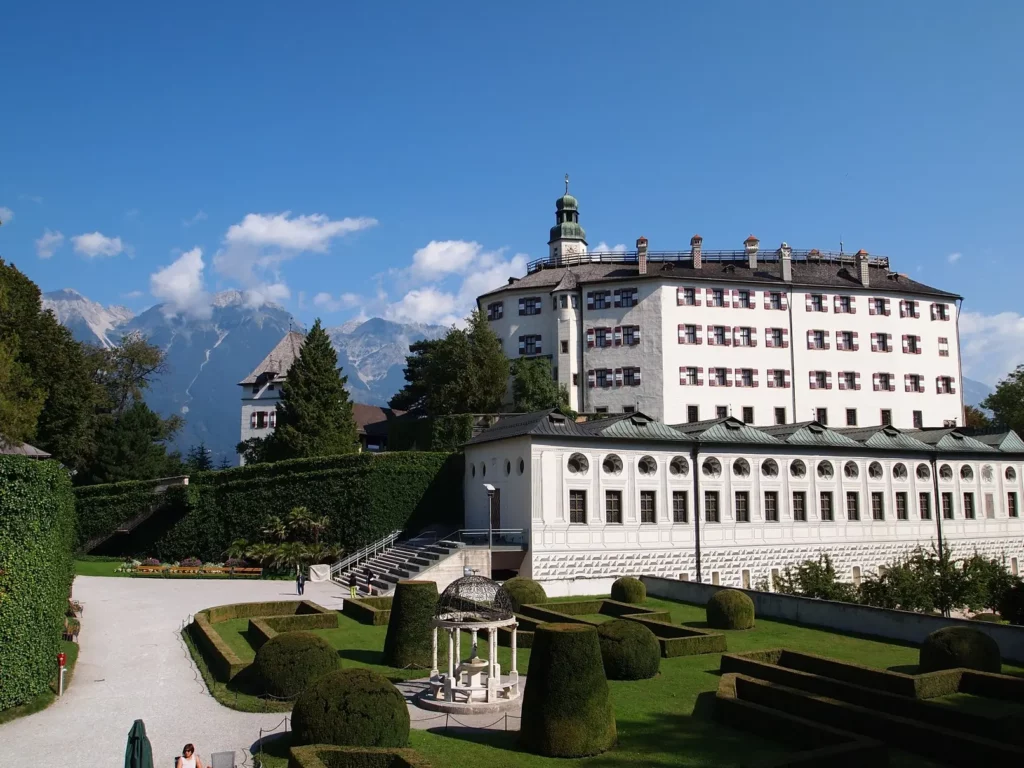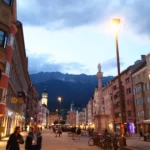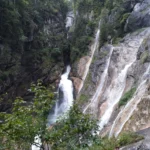Last Updated on 27/08/2024
Are you making a stopover in Innsbruck? Don’t miss Ambras Palace. You can easily combine the visit with the Patscherkofel cable car. Nearby is also Olimpic Ski Jump Bergisel.
The first part about Innsbruck is here.
Around Innsbruck. From Reutte to Brenner
Zugspitze Austrian side – Lakes
Zugspitze Austrian side – Ehrwald, Lermoos, Bichlbach
Oetz Valley. Stuibenfall waterfall
Inn valley attractions on the map – from Innsbruck to Kufstein
Natters, Mutters, Bergisel
From the south, along a deep valley from the Brenner Pass towards Innsbruck, the Sill River flows, an autobahn has been built parallel to it. On one side of the autobahn (to the right, when looking south) is the Pfriemesköpfl mountain and the villages of Natters and Mutters, where the tram and cable car end are located.
In addition to the view from a height of 1800 m, this cable car offers a small lake-reservoir, an adventure playground with a suspension bridge and tree huts and paths adapted for strollers and wheelchairs.
View from Mount Patscherkofel to Natters and Mutters

The tram to the cable car goes from Bergisel. This is a ski jump with a panoramic restaurant at the top. It is located next to the autobahn. There is also a hunting museum, a panorama of Tyrol. Nearby is the Sillschlucht gorge.

Patscherkofel
On the other side of the autobahn – Mount Patscherkofel (2250 m) and the villages of Igls, Vill, Sistrans. A trip to the mountain can be combined with a visit to Ambras Palace.
All these villages are at a fairly decent height. In reality (I don’t know how officially) this is no longer Innsbruck. Although the hotels there are offered as if they were in Innsbruck.

At the end of tram line 6 (departs also from Bergisel), in the village of Igls, there is a cable car to the mountain itself. From tram you must walk. An alternative to the tram is the bus line J, which runs from the Patscherkofel cable car to the Nordketten cable car through the center of Innsbruck.
The cable car has an intermediate stop, but it’s just a “roost” in the forest. There is no point in going out there, unless you are going to visit the bobsleigh track. But you need to change gondols to get to the very top. With a stroller, the cable car is only partly accessible (stairs to the gondols).
The upper station is not at the very top, you still need to climb futher. However, a good panorama opens from the station itself. As a bonus, there is an Alpine Botanical Garden (free of charge, from May to September).






The combination of Ambras Palace – Patscherkofel is a great option for a day trip in good weather. Especially if you are not limited in movement and can also afford to walk.

Booklets and website advertise Zirbenweg (2.5 hours) as the most comfortable and accessible, including with children. On almost gentle descents and ascents through one of the oldest European pine forests along the mountain slopes to the Glungezerbahn cable car, which will take you down to the village of Tulfes. From there you can take a bus back to Igls or to Hall. But don’t forget to buy the special Rundwanderticket des Zirbenweges ticket if you want to use the bus to Igls, and check the timetables on the cable car websites.
Innsbruck Ambras Palace
How to get to Ambras castle
To get to the Ambras castle, you can take the mountain tram to Igls (Mittergebirgsbahn, line 6) to the Tummelplatz stop or by bus.
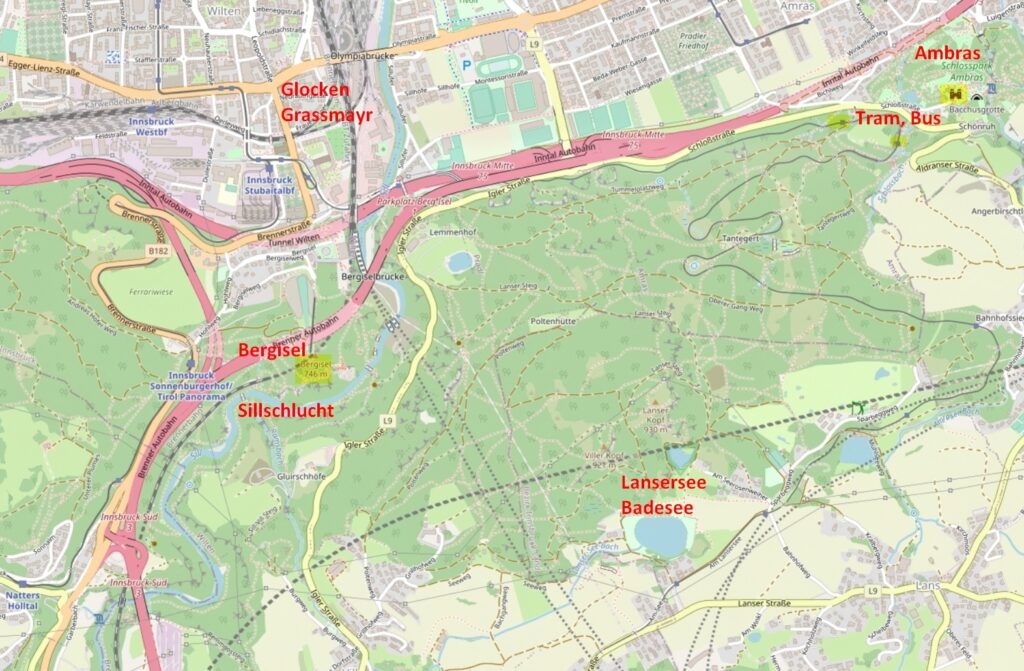

The first known fortification on the rocks above the valley was built by the Counts of Andechs. But already in the 12th century it didn’t exist. The ruins, together with Innsbruck, passed to the Tyrolean counts, and then to the Habsburgs.
The second son of Emperor Ferdinand 1, Archduke Ferdinand 2, took possession of Tyrol. Ferdinand 2 decided to build a residential Ambras castle (Hochschloss) some distance from Innsbruck, because he was married in a secret marriage to Philippine Welser (daughter of a wealthy merchant from Augsburg).
Philippine Welser was very popular among the Tyroleans due to the help she often gave to those in need. The children of this marriage were deprived of inheritance rights to Tyrol, but the second son of Ferdinand inherited the palace and collection, which he sold to the Habsburgs. After that, the palace was rarely visited, so part of the collection suffered, especially books. From the 17th to the beginning of the 19th century. the collection was gradually taken to Vienna. In the middle of the 19th century the palace was turned into a summer residence, a landscape park was laid out. From the end of the 19th century the palace became a museum, restoration was carried out and the collection of Ferdinand 2 was gradually returned.
Museum
Visit consists of three parts. The lower, detached building near the gate is a building that the Archduke specially built for his collection. A variety of armor (from the 15th century), weapons, curiosities from different parts of the world, and works of art are exhibited.





Allegorical signs of the Zodiac on the ceiling.

Next – medieval rarities and works of art. Original work of arts made of wood, stone, corals, clothes from Africa, Asia and even Japan.
Follow me
Spanish Hall
Further, the visitor goes to the Spanish Hall – this is the main hall, added by the Archduke a little lower than the main palace in 1572 and connected with it by a staircase. On a small terrace between the hall and the palace there is a garden of medicinal plants.
Stucco and wood carvings in the hall and in the room in front of it date back to the period of its creation, and images of the rulers were added in the 17th century.



Palace
The palace is an almost square building with a courtyard-well in the center. All interior walls are painted in black and white. The plots are typical for that time: muses and heroes. Since the palace was not inhabited for a long time, the interiors, of course, were not preserved. The only thing that has survived from the time of the Archduke is the Philippine Weser bathrooms. The bathrooms consist of a “sauna” and a small galvanized “pool”.
Bathrooms are located on the first floor. Also on the first floor is the chapel of St. Nicholas – its current form was created in the 19th century, church valuables (icons, silver), Gothic sculptures of the 16th centuries.
Above is an exhibition of portraits of the Habsburgs from the period of the 14th-18th centuries, among them the work of Lucas Cranach the Younger, Giuseppe Arcimboldo, Rubens, van Dyck, Velasquez, Titian.
Although it is rather tedious to look at all the paintings in detail, it is worth looking at them selectively. There are very curious paintings, many children’s portraits. You can look, for example, at the girl Anna of Austria or the girl Maria Theresa. It is interesting to observe how the faces of monarchs become less intelligent and beautiful over time – a consequence of constant closely related ties. In addition to portraits, there are few pieces of glassware and furniture.
The top floor is given over to temporary exhibitions.




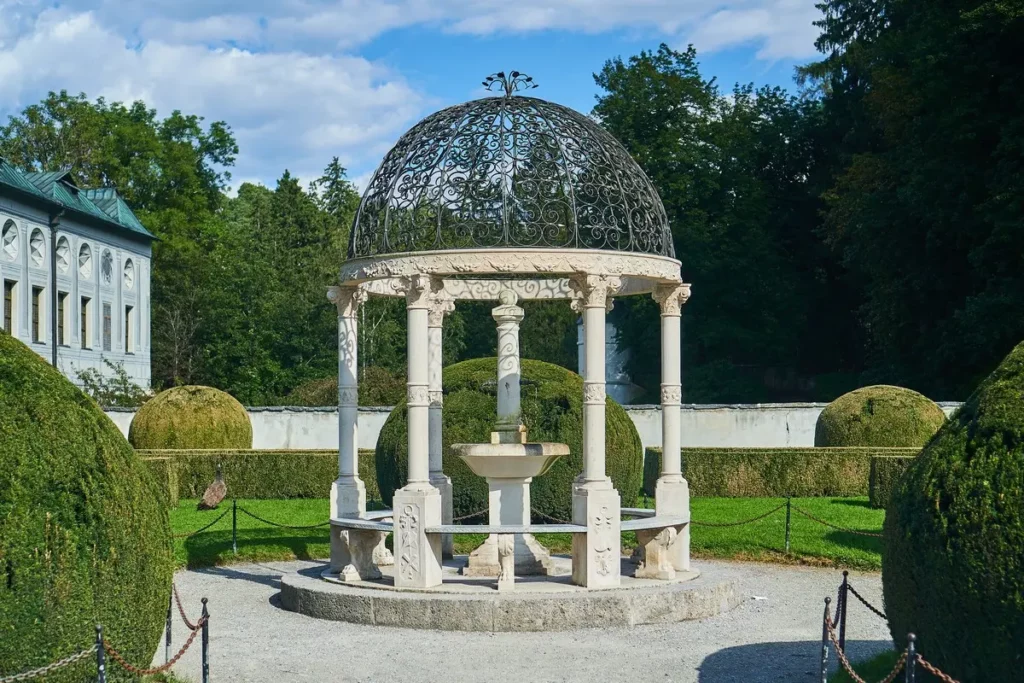
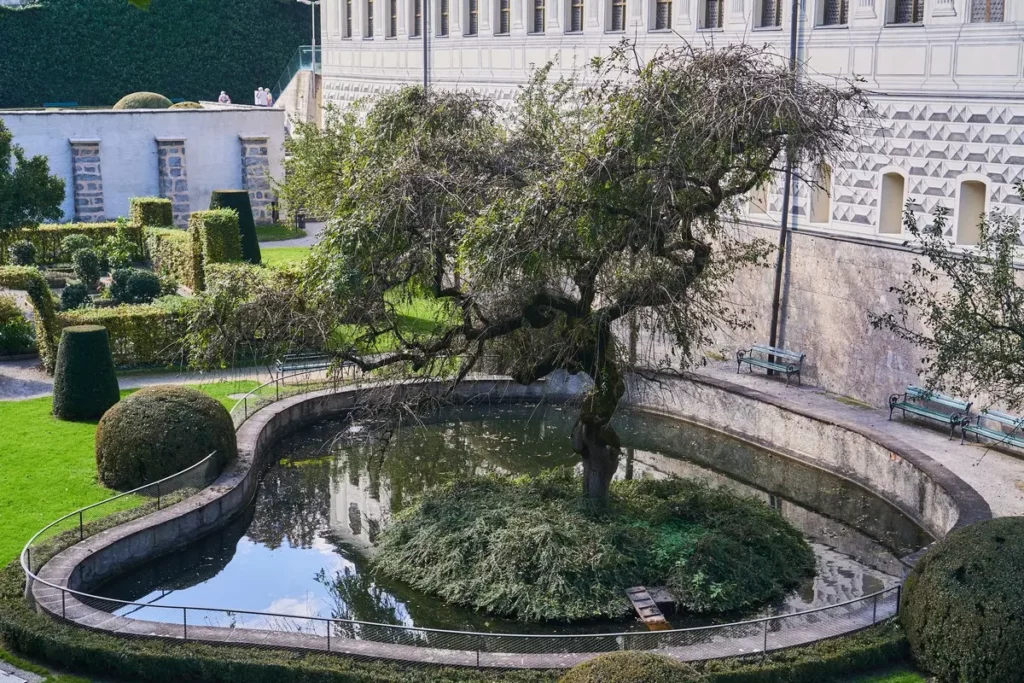

View of Innsbruck from the castle.

Sights towards Kufstein
In this list you will find possible destinations for a day trip from Innsbruck. Sights in the other direction – on the map from Bregenz to Innsbruck.
- 1. Swarovski Crystal Museum Kristallwelten (shuttle 4 times a day from the station).
- 2. Schwaz: old town, silver mine (www.silberbergwerk.at, by bus from the train station or from the city center), Wolfsklamm Gorge (bus to Stans).
- 3. Steam railway and boating on the mountain lake from Jenbach (www.achenseebahn.at)
- 4. Krimml Waterfalls (by auto possible, by train/bus more than 3 hours – via Zell am See or Mittersill)
All sights – Inn valley attractions on the map – from Innsbruck to Kufstein
The first part about Innsbruck is here.
See for more sights the map Around Innsbruck. From Reutte to Brenner
Inn valley attractions on the map – from Innsbruck to Kufstein
Do you enjoy the site without cookies? This means that I work for you at my own expense.
Perhaps you would like to support my work here.
Or change your cookie settings here. I don’t use personalized ads

